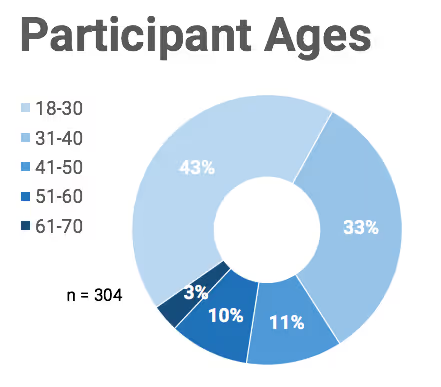Inspired by some great feedback on our Ecommerce Price Perception and Image Size Study, we wanted to explore price perceptions again, this time related to differing product descriptions. Do consumers find more value in a blender that makes creamy smoothies and shakes, or a blender with 750 watts of power? What type of product descriptions depict a seemingly high-value product, hedonic ones or utilitarian ones? In this CXL Institute study, we test three different products to explore this question.
Results summary
Results were mixed: The hedonic product descriptions communicated a higher average value for the two less expensive products (coffee maker and blender).
- Participants found the blender significantly more valuable when they read the hedonic product description.
- They also found the coffee maker to be more valuable when paired with the hedonic product description (yet this finding was not significant).
The utilitarian product description communicated a higher average value for the expensive product ($1,000 vacuum).
- The vacuum cleaner, a product that sells for over $1,000, had a higher perceived value when paired with the utilitarian product description (although not statistically significant)
Background
Hedonic (adj): Of, relating to, or characterized by pleasure.
Utilitarian (adj): Made to be useful rather than to be decorative or comfortable.
In this study, we apply both hedonism and utilitarianism to product descriptions to measure their effect on perceived value of a product. Does a product description heavily focused on the utility of the product increase perceived value? Or, alternatively, do pleasure-filled hedonic descriptions drive up the perceived value of a product? To get a better idea, consider the differences in these two product descriptions for a sweater:

Study Question: Which of these descriptions makes a product seem more expensive?
Study Report
Data Collection Methods and Operations:
We tested three relatively similar products: a blender, a coffee maker, and a vacuum cleaner.
We chose three similar products (all are household appliances).
Additionally, all three products are "search goods", meaning their quality can be (relatively) evaluated before being purchased. Experience goods are on the other end of the spectrum and are goods whose quality can only be evaluated once they've been experienced (e.g. a cruise package or massage).
Imagine we chose to test vastly different products like a vacuum cleaner and a 60-minute massage. If we then found different results among these two products, the reason for these differences would be unclear. Perhaps the nature of the products played a part, we would have no way to know. By selecting similar products, we eliminate these types of uncertainties.
The main difference between these three products is their prices. The coffee maker is originally priced at $149, the blender at $199, and the vacuum at $999. We were curious to see if more —or less— expensive products were particularly affected.
Before testing, all prices, logos, and irrelevant information were removed from product pages to eliminate price influences outside of the product description (e.g. if people see "Dyson", they may also see "expensive").
Each product page had two variations: A variation with hedonic product features and a variation with utilitarian product features. The same features were used for both variations, just worded differently to suit each variation.
Example of product descriptions:
- Stainless steel blade system
- Four variable speed settings plus pulse & smoothie mode
- 6 cup contoured pitcher
Utilitarian
- Stainless steel blades blend a smooth consistency every time
- Multiple settings for perfect smoothies, cocktails, shakes & more
- Contoured 6 cup pitcher for big batches that pour easily
Hedonic
Participants
304 participants responded to the survey.

Other Key Info (like treatment variations)
Here are the variations used:






Findings

Blender:
- Participants perceived the blender to be significantly more valuable when paired with the hedonic product description Two-tailed t-test: "At what price is this a bargain?" p=0.0129; "At what price is this too expensive?" p<0.001
Coffee Maker:
- While the hedonic product description did elicit a higher perceived value, the difference was not significant. Two-tailed t-test: "At what price is this a bargain?" p=0.66; "At what price is this too expensive?" p=0.62
Vacuum:
- While the utilitarian product description did elicit a higher perceived value, the difference was not significant. Two-tailed t-test: "At what price is this a bargain?" p=0.69; "At what price is this too expensive?" p=0.84
Key Takeaways: Between the hedonic and utilitarian descriptions, there were differences in perceived value for each product. However, there was no overarching pattern in which type of product description elicited a higher perceived value. Utilitarian product descriptions communicate value for highly expensive products like the $1,000 vacuum. Hedonic product descriptions communicate value for less expensive products ($200 or less).
Limitations
These findings are limited to household appliances. It's unclear whether they would apply to other industries or products. While we'd like to say "expensive products benefit from utilitarian descriptions, inexpensive ones benefit from hedonic descriptions", we cannot say this with confidence. Testing many other types of products and services would be necessary for that conclusion. Other variations of product descriptions may elicit different value perceptions. Even if the descriptions remained utilitarian and hedonic in nature, different specifications might evoke different opinions about the product (e.g. coffee maker has a 100 ounce water reservoir instead of 70 ounces).
Conclusion
Results were mixed. On one hand, the hedonic product descriptions communicated a higher average value for the two less expensive products (coffee maker and blender).On the other hand, the utilitarian product description communicated a higher average value for the expensive product ($1,000 vacuum).





























.svg)
